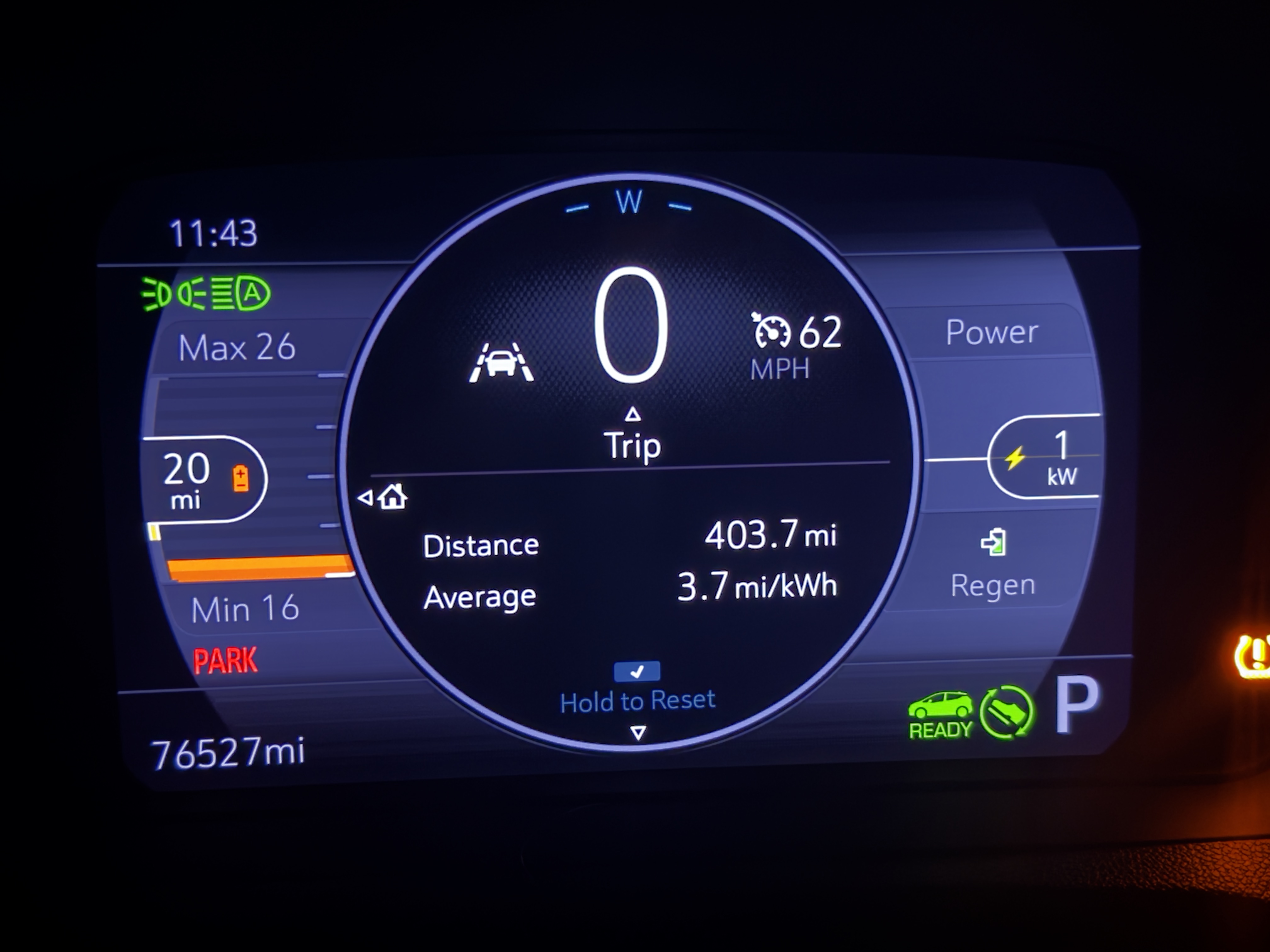Chevy Bolt EV After 75,000 Miles: An Honest Look at Battery Degradation and Real-World Range
What Really Happens to an EV After 75,000 Miles?
It’s one of the most common questions I hear from folks considering an electric vehicle: "How does the battery hold up over time?" It's a fair question. I talk a lot about the joy and savings of EV ownership, but it's just as important to be good stewards of these amazing machines for the long haul. So, I decided to put my own 2022 Chevy Bolt EV to the test.
With just shy of 76,000 miles on the odometer, I embarked on a 400-mile road trip to get some real, hard data on its current battery health, range, and efficiency. This isn't a hyper-miling test in perfect lab conditions; this is a real-world drive with traffic, hills, temperature changes, and even a set of non-standard Walmart tires on Chevy Cruze Eco rims. Let's dive into the results.
The Highway Grind: A 400-Mile Efficiency Deep Dive
The plan was simple: charge to 100% and hit the road. The first leg of my journey was a 222-mile stretch. Here’s how the Bolt performed:
- Average Efficiency: 3.9 miles per kWh
- Average Speed: 52.5 mph
- Remaining Battery: 7%
Interestingly, I was aiming for a steady 65 mph, but a bit of traffic slowed me down. In the world of EVs, that’s actually a good thing for range! Slower speeds demand less energy, boosting my efficiency. Based on this leg, a full charge would have given us a total range of about 242 miles, not bad for a car with this many miles.
By the end of the full 403.7-mile trip, our numbers had shifted slightly:
- Total Trip Efficiency: 3.7 miles per kWh
- Total Trip Average Speed: 55 mph
Why the drop? The second leg of the trip involved more hills and a temperature drop from 72°F down to 52°F, which meant running the heater. These are the real-world factors that impact any road trip, and it’s a great reminder of how conditions, not just mileage, affect an EV's performance.

For the whole trip, I only stopped to charge once at an Electrify America station. A single charge to 90% cost about $20 and was enough to get me home. While I could have made the charging stop faster by splitting it into two shorter sessions, one longer stop worked just fine for my schedule.
The Big Question: What About Battery Degradation?
Alright, let's talk about the number you’re all here for. After nearly 76,000 miles, how much has the battery’s capacity faded? I measured the usable capacity and found it’s now at 57.7 kWh, (although after a charge from 5%-100% it is now at 58 kWh) down from its original 64 kWh.
That’s a degradation of about 11%.
For a car that has been driven this much, that's a perfectly reasonable figure. It shows that modern EV batteries are built to last. It’s important for me to be transparent here: this Bolt did have its battery replaced under warranty at 59,000 miles, likely with a refurbished unit. So, this degradation has occurred over the last 17,000 miles plus its prior life. Still, it provides a valuable real-world benchmark for what to expect.
This reality of degradation isn’t something to fear; it’s something to plan for. Just like any tool we own, understanding its capabilities and limitations is key to using it well. Being a good steward of a vehicle means maintaining it, understanding its health, and appreciating the service it provides day in and day out.
The Surprising Twist: Why Fun Roads Are More Efficient Than Freeways
Here’s where things get really interesting. A week after the road trip, I took the Bolt out with a local driver's club for a spirited drive on the Blue Ridge Parkway. I weren't trying to save energy, I was carving corners and having a blast.
Logic would suggest that aggressive driving would tank my efficiency. The result? A stunning 4.3 miles per kWh!
How is that possible? The answer is regenerative braking. On winding, hilly backroads, you're constantly speeding up and slowing down. Every time you lift off the accelerator or brake for a corner, the Bolt recaptures energy and sends it back to the battery. On a highway, you're just pushing against wind resistance at a constant, high speed, which is a steady drain on the battery.
This was a powerful reminder that an EV’s efficiency isn’t just about speed; it’s about the type of driving you’re doing. If you’re planning a road trip, choosing a scenic backroad over an interstate might not just be more enjoyable, it could actually get you more range.
Our 75,000-Mile Verdict
So, what have I learned? The Chevy Bolt EV remains an incredibly capable and efficient vehicle, even with high mileage. Battery degradation is a real factor, but an 11% loss after 75,000 miles still leaves plenty of capacity for daily driving and long road trips.
Most importantly, real-world experience continues to be the best teacher. Understanding how factors like temperature, terrain, and driving style affect performance allows me to be a smarter, more prepared owner. It's about working with the technology to get the most out of it and appreciating the journey along the way.
---
What has your experience been with long-term EV ownership or battery health? Share your story in the comments below!
For a closer look at the data and to see the road trip in action, watch the full video on our YouTube channel. And don't forget to subscribe to Elevate Motor Co. for more honest EV reviews, adventures, and conversations about faith and technology.